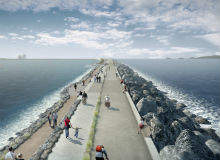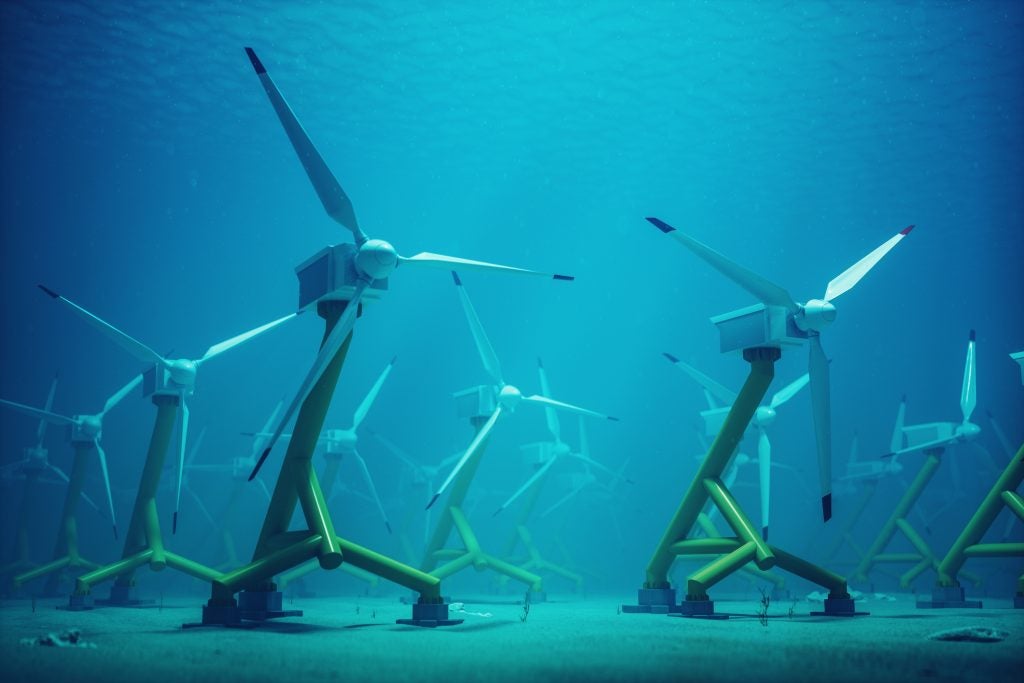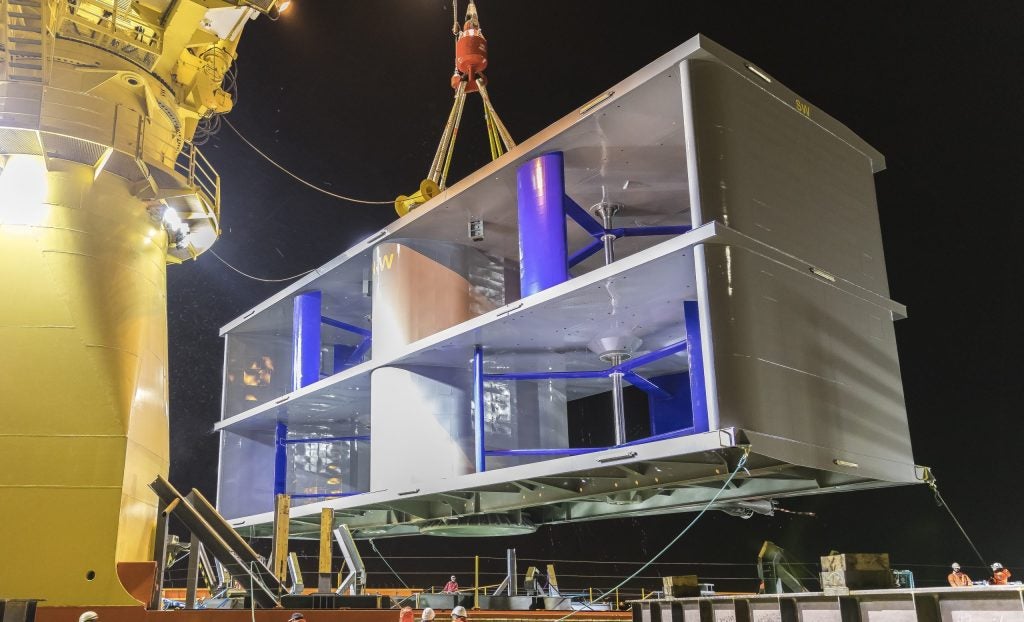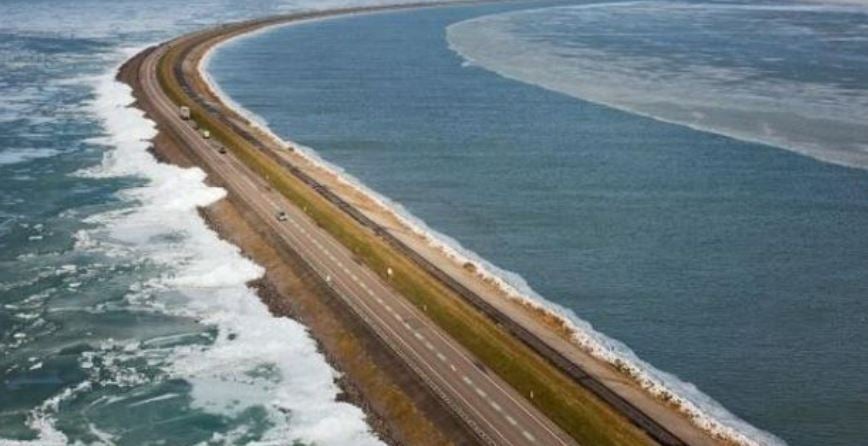
This year, the UK Chancellor of the Exchequer Philip Hammond is expected to announce the fate of the 320MW Swansea Tidal Lagoon pilot.
Plans for the huge tidal energy project, which would involve a five-mile causeway being built out to sea, have been in progress for two years, and comprise 16 turbines expected to provide power for 120,000 homes for 120 years. Electricity would be generated by releasing dammed water through the turbines on both incoming and outgoing tides.
However, the £1.3bn tidal lagoon project stalled earlier this year after ministers were said to have balked at the extent of subsidies its developers were seeking. Although the Swansea scheme is privately-funded, lead developer Tidal Lagoon Power is pursuing an agreement with the UK Government for a financial package to support its much larger programme of up to six full-scale tidal lagoon power projects around the UK coast.
Building a tidal lagoon?
In February, the government launched a review tasked to look into the case for tidal lagoon energy right across the UK. Despite the review being welcomed by Mark Shorrock, chief executive of Tidal Lagoon Power, he also warned that it mustn’t be a substitute for action.
Since then, new concerns about the Swansea tidal project’s viability have been raised. For instance, a study commissioned by the Welsh Government and undertaken by Miller Research, Whole Life Consultants, and the Construction Industry Training Board identified a skills gap, and claims that more than 2,200 workers would be needed to build the proposed project. At the same time, the study estimates that Wales only has around half of the manufacturing capability needed to complete the scheme, which now faces competition from other major projects such as HS2 and Hinkley Point C.
Regardless, Swansea’s proponents believe the skills shortage can be overcome, and Tidal Lagoon Power says it is working in partnership with Welsh industry, education and the government to ensure the project goes ahead. Also, the company has awarded GE and Andritz a £200m contract for turbine assembly and manufacturing works, which it wants to see carried out at a plant in the Swansea Bay area.
How well do you really know your competitors?
Access the most comprehensive Company Profiles on the market, powered by GlobalData. Save hours of research. Gain competitive edge.

Thank you!
Your download email will arrive shortly
Not ready to buy yet? Download a free sample
We are confident about the unique quality of our Company Profiles. However, we want you to make the most beneficial decision for your business, so we offer a free sample that you can download by submitting the below form
By GlobalDataThe Welsh Government, meanwhile, is working with employers, individuals, trade unions and other partners to deliver a training implementation programme, following on from its policy statement published in January 2014. It sets out key policy actions to take place up to 2017, which it says “will provide the basis for future employment and skills policy interventions over the next decade”.
A series of integrated skills performance measures are in place that will provide a mechanism for driving up technical knowledge levels in Wales, and the government will also review the case for use of international benchmarking tools. A mid-programme review and evaluation is scheduled for October 2017.
The cheap power breakthrough we’ve been waiting for?
Should the Swansea project get the go ahead? It could be the game changer for green energy that environmentalists have long been waiting for. Tidal Lagoon Power needs Swansea Bay to establish a scalable blueprint for its other projects. “Beyond this, we aim to develop, construct and operate a fleet of tidal lagoons to meet up to 8% of UK electricity demand,” says Lisa Jenkins, the company’s Media Advisor (Wales). “This fleet will exploit the opportunities that tidal lagoons offer for social, economic and environmental transformation and we will progress projects that contribute positively in each area.”
Although the project could initially add 10p to householder’s bills the company believes that once its pilot blueprint is employed by the other larger projects it could take £5 off householder’s bills. In addition, it believes that the technology has advanced to the extent that tidal lagoon power now requires a lower level of subsidy support than offshore wind.
“We have proposed an equivalent CfD [Contracts for Difference] strike price for the 320MW Swansea Bay Tidal Lagoon that is below that of offshore wind,” says Shorrock. “Our structure has a subsidy that reduces over time, meaning that for around half of the proposed 90-year contract, the lagoon pays money to government.”
Shorrock adds that, if the Swansea Bay Tidal Lagoon is linked to the delivery of a second, full-scale lagoon, this could reduce the equivalent CfD strike price of Swansea Bay to under £100/MWh, “comparable to the Hinkley C nuclear power station”. The much larger 2,700MW Cardiff Tidal Lagoon project has as an equivalent CfD strike price requirement of £68.30/MWh.
Cardiff awaits decision on Swansea lagoon
Proposals for the Cardiff project, which will harness natural power from the tides in the Severn Estuary, are at an early stage and construction will depend on the success at Swansea. Should Cardiff go-ahead, it will be the UK’s first full-scale energy-generating lagoon, with between 1,800MW and 2,800MW installed capacity and an annual output of between 4TWh and 6TWh – enough to power all Welsh homes.
Tidal Lagoon Power is also exploring options for a tidal lagoon at Newport with a similar capacity to Cardiff. As with Cardiff and Swansea Bay, Newport would harness the power of the Severn Estuary. However, the project is only at the pre-application stage and a formal application is not expected to be submitted until 2017 or 2018. There will then be 28 days in which the government body will review the application and decide whether or not to accept it. Still in Wales, Tidal Lagoon Power is also examining the potential for a Tidal Lagoon project in Colwyn Bay.
Early feasibility and consultation work has been underway for nearly two years. However, the company remains “very encouraged by the enthusiastic support shown to date by local people”.
Northwards, Tidal Lagoon Power sees significant potential for a tidal lagoon project along the West Cumbrian coast. The region has one of the highest tidal ranges in the UK and the company is now examining proposals for a full-scale tidal lagoon north of Workington.
Further south in Somerset, Tidal Lagoon Power is considering a project at Bridgwater Bay. The company says it is undertaking “a broad engagement programme with local communities, relevant authorities and any other interested parties, as a part of the engineering and environmental feasibility process.”
Alternative tidal technology
While Tidal Lagoon Power concentrates on harvesting power from the tides that rush into a bay or lagoon other UK companies are developing a different type of tidal energy from the fast flowing tides out to sea. In August, Scottish company Nova Innovation claimed what it describes as a ‘world-first’ for tidal energy with the announcement that it was successfully delivering power to the grid from a tidal turbine system in the Shetland Islands.
Nova is developing the project between the Shetland Islands of Yell and Unst, with the Belgian renewable energy group Elsa. The array has just two turbines, but the project is due to get another three by the end of next year. This will bring the total value of the project, which by then will be able to supply enough electricity for about 300 houses, to £3.6m.
The first phase of a much larger tidal power scheme, called MeyGen, between the Scottish mainland and the Orkney Islands is also nearing completion. In April, Equitix the infrastructure investor said that it planned to plough more than £100m into Scottish tidal power over the coming two years. It is expected to do this in partnership with Atlantis, the company developing the MeyGen scheme.
Energy diversification is key
However, as with tidal lagoon power, developers of fast-flowing tidal power have struggled with the high costs and technical challenges and they have had to rely on government financial support to get off the ground. But supporters of tidal energy believe that the UK Government’s commitments on fossil fuel and carbon emission reduction means that tidal power will inevitably be viewed more favourably.
According to the government’s own estimates, as much as 12% of the UK’s electricity could eventually come from fast-flowing tidal projects. This percentage rises even higher if tidal lagoon power is included. A power cost league table published in July by Tidal Lagoon Power, comparing UK energy consumer cost over a project’s lifetime, concludes that tidal power comes in well below alternatives such as solar, offshore and onshore wind, combined cycle gas turbine (CCGT), biomass conversion and new nuclear power generation.
Mike Edge tidal lagoon power analyst says the UK not only needs to diversify and expand its renewable and indigenous sources of electricity. However, it must be able to develop large-scale solutions that can be connected quickly and deliver long-term, low-cost, reliable and predictable power to communities. Tidal lagoons, he says, are uniquely placed to meet these criteria.






